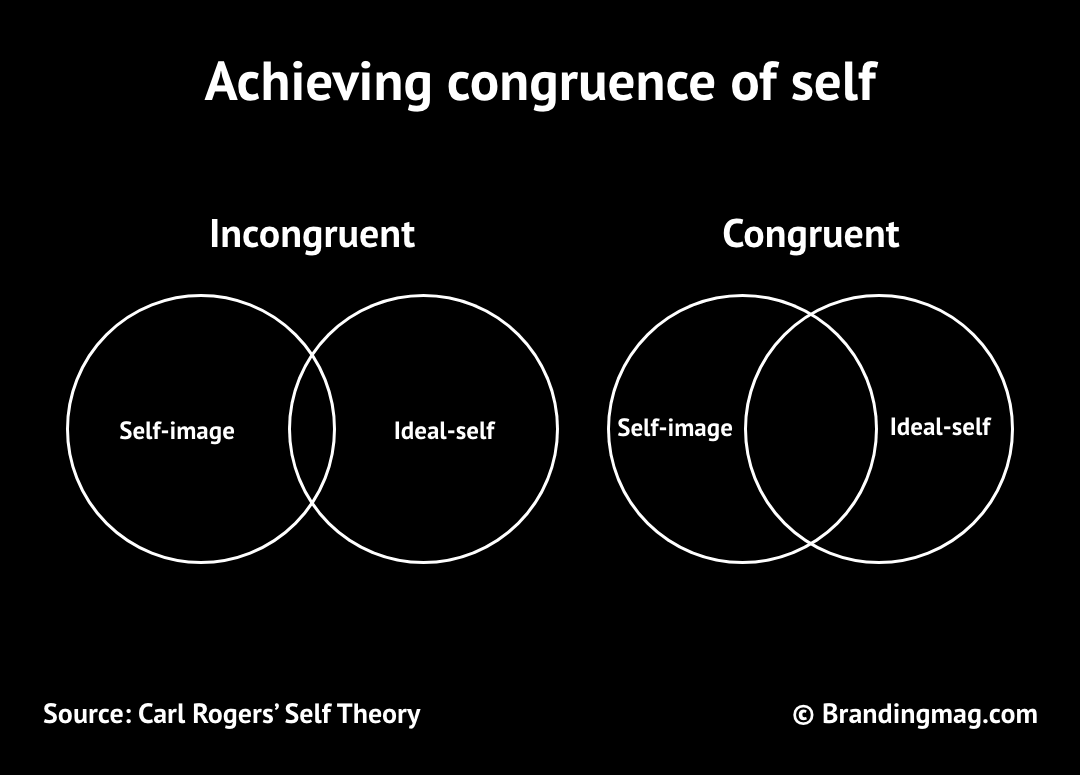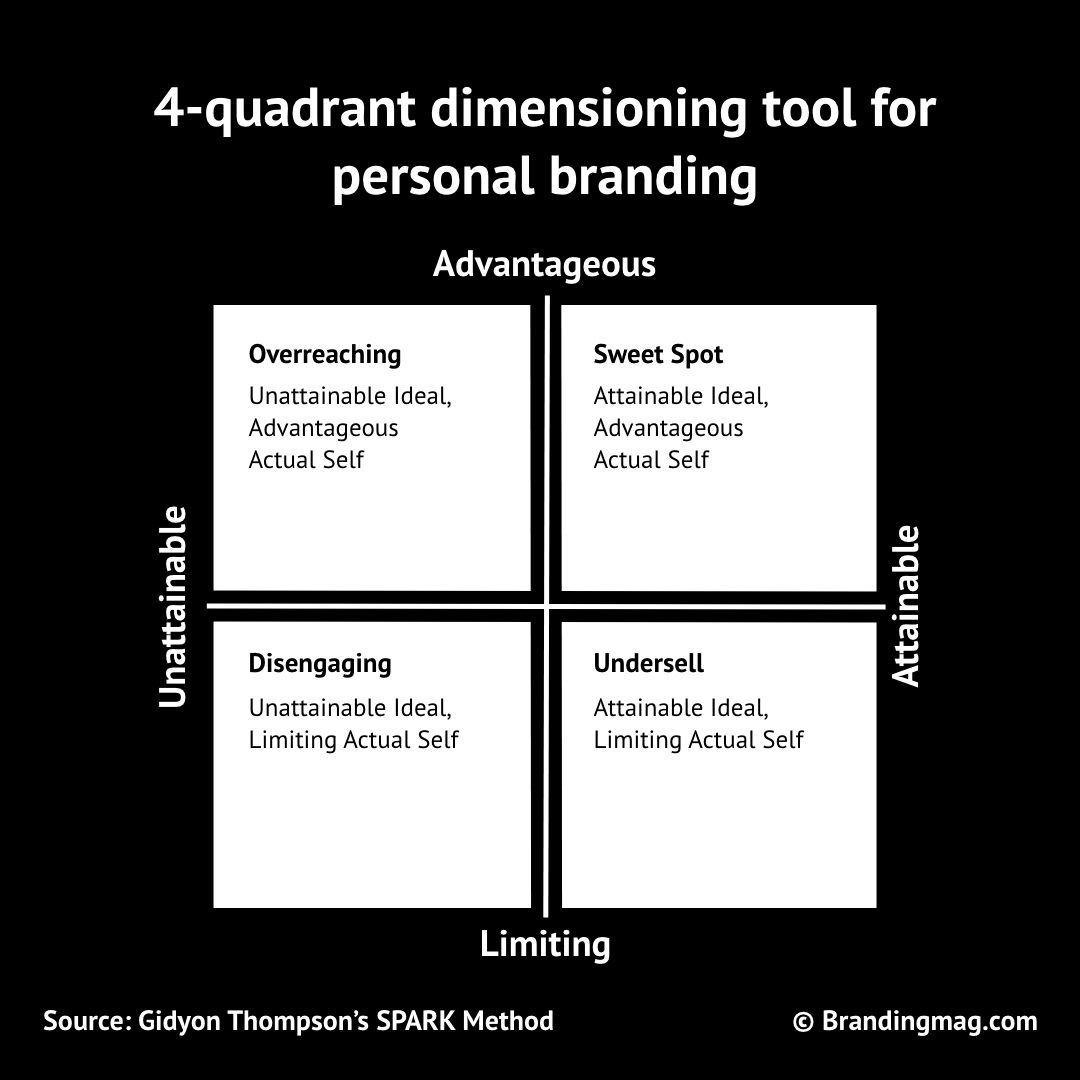
The conversation around personal branding is not new, but we’ve seen an increase in interest around the subject in the last few years. This is mainly due to the increasing demand for people to rise above the noise that digital platforms are exposing us to. It’s now a case of “stand out or be swallowed by the scroll”. Whether you’re an entrepreneur with a game-changing product or a jobseeker aiming for your dream gig, one thing’s clear: Personal branding is no longer optional.
While trying to build a solid personal brand, however, a dilemma occurs. What should my personal brand be built on? Failing to adequately answer this question is what leads business leaders to solely focus on producing high quality photography for Instagram and unnecessarily long stories for LinkedIn. A lack of clarity as to what their personal brand stands for or the ideas that anchor it is the most common issue around personal brand building.
So, how do you build a personal brand that is both true to yourself and resonates with your audience?
Some people take the route of sharing their reality–just about anything their life is about. They argue that audience members will connect with the innate authenticity of the content they’re sharing. Others take the curation direction, where they carefully select content that projects a particular perspective on them.
The digital world demands authenticity, that much is true. But somewhere between sharing your reality and perfecting your online persona, things get weird. This curation game, where every pixel is polished and every tweet sounds witty, creates a phony reality. Suddenly, your audience is questioning your “genuineness”, while you feel pressured to live up to some impossible online avatar by keeping that curation going.
In trying to make sense of this dilemma, I came upon the work of Carl Rogers and his theory of self. Turns out that a lot of what he purports can be redirected towards personal branding, giving us a clear step-by-step process for building one that satisfies both ourselves and those we’re looking to reach.
Carl Rogers’ Self Theory
In Rediscovering Rogers’s Self Theory and Personality, Nik Ahmad Hisham İsmail and Mustafa Tekke explain that Carl Rogers’ theory, also known as Person-Centered Therapy, focuses on the notion of self or self-concept. This self-concept is loosely defined as the individual’s tendency to act in ways that actualize himself and lead to his differentiation. The resulting group of experiences are differentiated and symbolized in conscious awareness as self-experiences, the sum of which establishes the individual’s self-concept.
Carl Rogers believed we all have an internal compass driving us towards becoming the best versions of ourselves, a concept he called self-actualization. This journey involves understanding our unique thoughts, feelings, and experiences, all of which form our ever-evolving self-concept. Like pieces of a puzzle, we categorize and label these experiences, building a distinct identity that sets us apart.
Three key concepts are important in this theory:
- The ideal self (who we aspire to be)
- The actual self (who we are currently)
- The concept of congruence (the gap between our dreams and our reality).
According to Rogers, the closer our perceived “ideal self” aligns with our actual self, the happier and more fulfilled we feel. Understanding these core principles while building a personal brand helps you solve for the anchor of your personal brand strategy. Not to mention it creates an authentic brand that resonates genuinely with your audience and fosters deeper connections.
And here’s why: By understanding your “ideal self” aspirations, you can craft a brand strategy that reflects your genuine ambitions and values. This attracts like-minded individuals who resonate with your journey. Recognizing your unique experiences and strengths also allows you to build a brand that stands out from the crowd, showcasing your distinct identity and avoiding generic, inauthentic presentations.
In other words, bridging the gap between your ideal and actual self builds trust and transparency with your audience. They connect with your real struggles and progress, making them more appreciative of your imperfections and willing to commit to following your transformational journey.
Quadrant for finding congruence for personal branding
While the work by Carl Rogers was designed for psychotherapy, I’ve adapted it into a dimensioning tool built for personal branding. It comprises four quadrants, each architected upon a dimension that stretches a combination of the initial two dimensions.
- Attainable Ideal: This describes a version of yourself that you aspire to be, but it’s achievable with realistic effort and commitment. It aligns with your strengths, skills, and resources, thereby making it a motivating and actionable goal.
- Unattainable Ideal: This describes a version of yourself that’s far beyond your current capabilities or resources. It might be based on unrealistic expectations or societal pressures, thereby leading to frustration and discouragement.
- Advantageous Actual Self: This represents your current strengths and skills, along with experiences that both benefit you and contribute positively to your personal brand. It highlights your unique value proposition and sets you apart from the others.
- Limiting Actual Self: This describes aspects of your current self that hold you back or inhibit your potential. It could be weaknesses, self-doubts, or experiences that impact your personal brand in a negative way.
Quadrant I: Sweet Spot (Attainable Ideal, Advantageous Actual Self)
This sweet spot represents the congruent zone as outlined by Carl Rogers. It combines desirable aspects of your aspirational self with strengths and skills from your current self. Building a brand in this quadrant focuses on utilizing your current skills and experiences to showcase progress towards your ideal self. Strategically, you will focus on highlighting how your present actions contribute to your desired future self.
Quadrant II: Overreaching (Unattainable Ideal, Advantageous Actual Self)
While potentially motivating, focusing solely on a future version of yourself that you know is unattainable (even if you align it with an advantageous actual self) will come off as inauthentic. This could involve projecting a persona that doesn’t align with your current skills and experiences. We see this a lot on Linkedin, where people share larger-than-life profiles that pose them as experts in a particular field, yet a simple engagement will expose them as having the knowledge and experience of a beginner in said field.
Quadrant III: Undersell (Attainable Ideal, Limiting Actual Self)
This quadrant flips the previous one as it asks that you focus on a realistic ideal alongside the perceived limitations of your current self. While honest, it might undersell your potential. A personal brand built on this quadrant is one that fails to highlight the amazing things you’re currently doing that add up to your future ideal state. It also does not spotlight the existing skills and experiences you have that contribute to your ideal self. For example, if you want to be known as the leading business lawyer in the country, then you don’t think it necessary to spotlight the white-collar cases you’ve won and the many certifications you’ve accumulated in that space.
Quadrant IV: Disengaging (Unattainable Ideal, Limiting Actual Self)
This quadrant combines potential inauthenticity with perceived limitations, leading to a challenging branding space. It could involve projecting a future self far removed from current skills and facing perceived hurdles. This is very popular on platforms like Instagram, where you find an influencer focusing on showcasing an unattainably luxurious lifestyle while struggling with self-confidence or poverty. Brands built on this quadrant are mere lies, and audience members can (most often than not) see right through it.
The SPARK Method for personal branding
A simple roadmap for designing personal brand strategy in that sweet spot is the SPARK Method:
S is for Self-Discovery
- Step 1: Ideal Self Vision
Start by asking yourself, what do I really want to become? What are my goals and aspirations? Then, go to the next level: What skills and expertise do I need to have to achieve that future state? Another quick way to look at it is to identify role models and mentors who represent your ideal self. Analyze their journeys. Identify the skills they have and how those abilities helped them build their personal brand. - Step 2: Actual Self Inventory
Now that you know your future state and skill needs, it’s time to take stock of where you are at the moment. Take personality assessments and skills tests to be sure of your current state. Go even further by reflecting on past achievements, experiences, and lessons learned. You can even gather feedback from trusted friends, colleagues, or mentors as to what they perceive your skills and potential to be.
P is for Plan & Bridge
- Step 3: Strategic Action
At this stage, you focus on creating a personal development plan that outlines areas for skill acquisition and knowledge deepening. You have to draw a roadmap that designates time and resources for learning, skill development, and networking opportunities.
A is for Authentic Narrative
- Step 4: Brand Story Development
This is the stage at which you begin to craft a compelling narrative connecting your ideal self to your actual self through your journey. Never forget that storytelling at this stage is focused on who you are currently and the attainable aspirations you have.
- Step 5: Consistent Messaging
When the story is clear, your next step is to develop a clear and consistent voice that reflects your authentic personality and brand ethos. At this stage, you’re clarifying what your brand communication will sound like. Be as transparent, honest, and relatable as possible for that’s how you build trust with your audience.
R is for Right Platforms
- Step 6: Platform Research
Now, you’re heading into town with your new personal brand. You’ll need to identify platforms where your target audience actively engages and consumes content. On what platform can you find the people you want to connect with? Most times, it’s best to use whichever platform you’re already popular on to drive your success on others. - Step 7: Content Strategy
You know the platforms and you know how you want to sound on them, so it’s time to start creating high-quality content that aligns with your brand story and goals. Utilize different formats like text, images, videos, and live streams to cater to diverse preferences. Don’t forget to maintain consistency in posting and engagement to build community around your brand.
K is for Keep Refining
- Step 8: Track & Analyze
You’ll have the ongoing task of monitoring your brand performance, engagement metrics, and audience feedback. Analyze what resonates and what needs improvement. Most social media platforms now offer insights that you can look through to see how time, content type, location, and other factors are impacting your engagement.Another way to track your brand’s impact is by selling. Sell something you think your audience needs and watch its conversion levels to see how much your audience trusts you. Do this sparingly, of course, but it’s important that everyone once in a while, you sell.
Let’s go back to the main question: How do you build a personal brand that is both true to yourself and resonates with your audience? The answer lies in the Sweet Spot: The quadrant where your Attainable Ideal Self aligns with your Advantageous Actual Self. By embracing this “congruence zone”, you avoid the pitfalls of inauthenticity or underselling your potential.
Follow the simple eight steps outlined above, embrace authenticity, and you’ll build a personal brand that not only resonates with your audience, but also reflects your true values and experiences, builds trust and engagement through real stories and shared aspirations, and grows and adapts as you progress on your self-actualization journey.
Cover image: Annette Shaff

